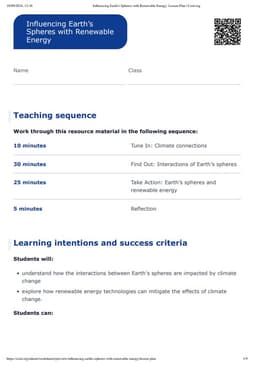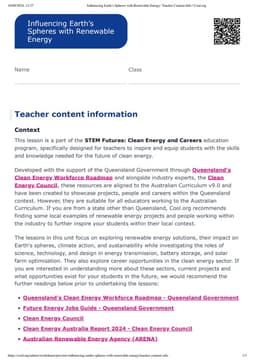Learning intentions:
Students will...
- understand how the interactions between Earth's spheres are impacted by climate change
- explore how renewable energy technologies can mitigate the effects of climate change.
Success criteria:
Students can...
- identify and describe the impacts of climate change on the geosphere, biosphere, hydrosphere and atmosphere
- analyse how different renewable energy sources (solar, hydro, wind and batteries) influence climate change and energy flow between Earth's spheres
- explain how technologies like solar panels, hydropower, wind turbines, and battery storage help mitigate the effects of climate change and contribute to sustainable energy flow.



